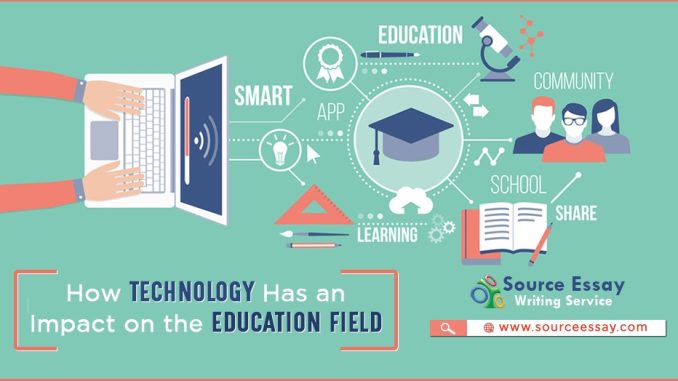
Technology has reshaped nearly every facet of modern life, and education is no exception. What was once confined to chalkboards and textbooks has expanded into a dynamic ecosystem of digital tools, platforms, and experiences. The impact of technology on education is not merely about convenience or novelty—it’s about transformation. It has redefined how knowledge is delivered, how learners engage, and how institutions operate. For educators, students, and business leaders alike, understanding this shift is essential to navigating the future of learning.
One of the most visible changes is the democratization of access. Technology has made learning more inclusive by breaking down geographic, economic, and physical barriers. A student in a remote village can now attend virtual lectures from top universities, access open-source materials, and collaborate with peers across continents. This level of access was unimaginable a generation ago. Online platforms, mobile devices, and cloud-based resources have turned education into a global enterprise, where learning is no longer limited by location or infrastructure. For organizations, this means talent development can be scaled and diversified, reaching employees in different regions with consistent quality.
Beyond access, technology has introduced personalization into the learning process. Adaptive learning systems use algorithms to tailor content based on a learner’s pace, preferences, and performance. This approach moves away from the one-size-fits-all model and allows individuals to engage with material in ways that suit their unique needs. A student struggling with a concept can receive targeted support, while another who grasps it quickly can move ahead without waiting. In corporate training, this translates into more efficient upskilling, where employees receive relevant modules that align with their roles and career paths. Personalization enhances engagement, reduces frustration, and fosters a sense of ownership over learning.
Interactivity is another hallmark of technology-enhanced education. Traditional lectures often rely on passive absorption, but digital tools encourage active participation. Simulations, gamified learning, and collaborative platforms invite learners to experiment, solve problems, and engage in dialogue. For example, a business student might use a simulation to manage a virtual company, making decisions and seeing the consequences in real time. This kind of experiential learning deepens understanding and builds practical skills. In professional settings, interactive modules can replicate workplace scenarios, allowing employees to practice responses and refine strategies before applying them in real life.
Communication has also evolved. Technology enables real-time feedback, peer-to-peer interaction, and asynchronous collaboration. Students can submit assignments, receive comments, and revise work within hours, rather than waiting for scheduled meetings. Teams can work across time zones, sharing insights and building projects through shared documents and messaging platforms. This immediacy fosters a more agile learning environment, where ideas are exchanged fluidly and progress is tracked continuously. For businesses, it means learning is no longer siloed—it’s integrated into daily workflows and supported by constant dialogue.
However, the impact of technology on education is not without challenges. The digital divide remains a significant concern, as not all learners have equal access to devices, connectivity, or digital literacy. Institutions must address these disparities to ensure that technology enhances rather than exacerbates inequality. Moreover, the abundance of information online requires learners to develop critical thinking and discernment. Not all content is accurate or relevant, and the ability to evaluate sources becomes a vital skill. Educators and organizations must guide learners in navigating this landscape, emphasizing credibility, context, and ethical use of information.
Another consideration is the role of human connection. While technology facilitates communication, it cannot fully replace the relational aspects of learning. Mentorship, empathy, and nuanced feedback are still best delivered through human interaction. Hybrid models that combine digital tools with face-to-face engagement often strike the right balance, leveraging the strengths of both approaches. In business, this might mean blending online modules with in-person workshops or coaching sessions. The goal is not to automate education, but to enhance it with thoughtful integration of technology.
Assessment has also undergone a transformation. Digital platforms allow for more varied and authentic evaluations, moving beyond standardized tests to include portfolios, presentations, and real-time analytics. Learners can demonstrate understanding through creative outputs, collaborative projects, and iterative improvement. For organizations, this means performance can be measured not just by completion rates, but by impact, application, and growth. Data-driven insights help identify strengths, gaps, and opportunities, informing strategic decisions about talent development and resource allocation.
Ultimately, the impact of technology on education is about empowerment. It equips learners with tools to explore, connect, and create. It enables educators to innovate, adapt, and reach broader audiences. And it allows institutions to evolve, becoming more responsive, inclusive, and effective. As technology continues to advance, the challenge will be to harness its potential thoughtfully—ensuring that it serves the goals of learning, supports the needs of diverse communities, and prepares individuals not just for today’s tasks, but for tomorrow’s possibilities. In this evolving landscape, education is no longer a static system—it’s a dynamic journey, shaped by the tools we choose and the values we uphold.